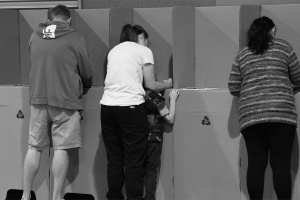A relaxation in drone rules should see more Australian businesses take to the skies.
By Chris Griffith
Australia’s Civil Aviation Safety Authority (CASA) will relax restrictions on lightweight drones used for commercial purposes.
The move will allow businesses to operate drones weighing less than 2kg for commercial use, without the need for an unmanned operator’s certificate.
Currently, businesses need to provide documentation proposing exactly what they plan to do with a drone, where, when and for how long. Alternatively, they outsource certified operators to fly them. Only recreational users could fly drones without a licence. Their use for any commercial purpose in Australia needed an unmanned operator’s certificate.
However, Australia’s Civil Aviation Safety Authority said it would relax rules for lightweight drones weighing less than 2kg. Commercial operators soon can fly them without first gaining a certificate or license.
The change is the result of a risk assessment carried out by CASA, but spokesperson Peter Gibson told Business Insider that basic operating conditions will still have to be met.
“The take up rate for businesses is impossible to say, but it will certainly reduce the red tape burden for commercial use of drones under two kilos,” he said.
While a 2kg weight limit is restrictive, it gives businesses leeway to fly drones with HD video capability such as the Parrot Bebop (420g) and the China-made DJI Phantom 3 (1280g).
CASA spokesman Peter Gibson said the rule change would happen later this year and follows an assessment by CASA of the risk involved with lightweight drone mishaps.
“It (CASA) was looking at what are the risks of an RPA (remotely piloted aircraft) under 2 kilograms from a safety perspective. The risk was sufficiently low enough to not need the extra layer of regulation.”
Gibson said the changes are expected to be made in the fourth quarter of 2015, but may not take effect until 2016.
Australia’s unmanned aircraft rules for commercial use will undergo a full review later this year — something that hasn’t occurred since they were implemented in 2002.
CASA is also considering issuing a manual of standards to support the new regulations containing information on licensing, controlled airspace training, records management and operational standards.
The move is the most significant of several preliminary changes to regulations before a full review of commercial and recreational drone use. Mr Gibson said CASA’s unmanned aircraft rules hadn’t been reviewed since their implementation in 2002.
The change should see business use of drones flourish. Real estate firms will be able to shoot overhead shots of homes for sale without engaging outside operators. Tradesmen, architects, professional photographers, journalists and farmers will be able to conduct fly-yourself drone activities lawfully.
But there is a catch. Mr Gibson warned that unlicensed commercial operators will still have to obey the same rules as recreational users. They can’t operate within 30 metres of people not involved in flying the drone, they can’t fly over gatherings of people, fly above 400 feet (122 metres), and the drone must be at least 5 kilometres away from airports. Unlicensed users also have to fly by sight.
“It will offer opportunities for people using small machines but you’re not going to have carte blanche to charge around doing whatever you like,” Mr Gibson said.
Those dissatisfied with these restrictions will still have to use a registered drone operator or seek certification themselves. There are two forms of certification: an operator’s certificate for the business and a controller’s certificate for pilots.
Mr Gibson said the popularity of drones meant there was at least a six month wait for an operator’s certificate. He said CASA had so far issued 220 approvals to commercial bodies wanting to fly drones. Another 100 applications were being processed now.
Drones were used to great effect this year at Anzac Day with the BBC publishing drone footage shot overhead from the shores of Gallipoli.
However, there have been embarrassing incidents of drones going astray. In 2013 a Sydney train operator thought he had seen a bomb when a drone crashed into the Sydney Harbour Bridge and onto railway tracks ahead of him. The drone filmed the entire event.
In December last year a man from Altona, Victoria was fined $850 after his drone hit powerlines and crashed, nearly hitting a police officer at the scene of a siege. It was believed the man was trying to shoot overhead footage of the siege to sell to TV stations.




